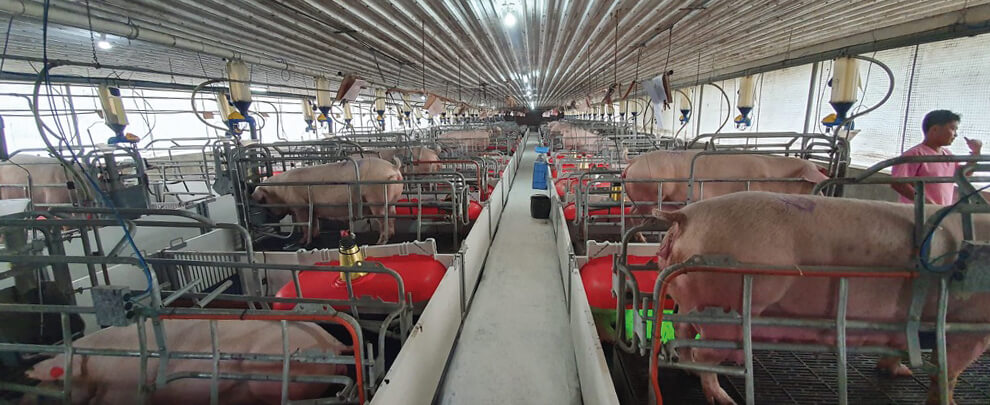Blog
Blog

The Philippines recovers its pork production, after ASF
24th August 2023 - News
The Philippines has a long tradition of pork production and consumption. Its pork industry is an important business within the country’s agricultural sector, representing 55% of the total livestock industry. Although in 2019 the country’s pork sector suffered the impact of African swine fever (ASF) and significantly reduced its domestic production, in 2022 more than one million tons of pork were produced, initiating a process of recovery of the sector.
Current situation
In 2021, the Philippines had a pig tally of 9.87 million, 12.4% less than in 2020, with 11.27 million. The pig count in both backyard and commercial farms decreased by 8.2% and 21.8%, respectively. This drop in production is one of the consequences of the ASF outbreaks that have affected the country. However, in 2022 the country began a recovery of its pig herd and by the end of the same year, it had just over 10 million heads. Of these, 21% belonged to professional commercial farms, while 79% to small backyard family farms.
On the other hand, until 2020, the Philippines produced about 85% of its domestic pork consumption, while the rest was imported. However, the reduction in consumption brought by the Covid-19 pandemic, with the consequent reduction in imports, and the impact of ASF, which came to the country in 2019, caused a sharp setback in 2020 as far as own production, which would have led to higher imports had it not been for the strict controls imposed by the Philippine government. All this also meant an important change in the structure of pig self-sufficiency in the Philippines, something that has begun to reverse in 2022. Currently, the Philippine pork sector focuses on meeting the fresh meat demands of the market, and only 15% of all production is destined for the processing sector. Imported pork is mainly intended for the processing sector, and not for retail.
Consumption
Pork is a very popular food among the Filipino population and represents the main source of protein intake in the country, above chicken and beef. Per capita, pork consumption in the country grew continuously from 2010 to 2019, but as a result of the spread of ASF throughout the country and its consequent impact on the price of pork, consumption fell significantly, standing at approximately 11 kg per inhabitant per year, during 2020 and 2021. However, the recovery of the tally and production started in 2022 was also reflected in consumption, which stood at 15.5 kilos per capita.
Imports
The Philippine government sustains a protective position regarding the arrival of pork in its country with strong restrictions in the regulation of imports and certain import barriers such as the existence of maximum import quotas. However, this stance was softened in 2019 by the difficult situation regarding meat sourcing caused by ASF and Covid-19. In 2021 the government introduced a system of reduced duties on imports of fresh, frozen and chilled pork. At the moment (May 2023), those reduced taxes remain.
In 2022 the Philippines imported 755,470 tonnes of pork and processed pork worth €947.92 million. Philippine imports are mainly based on frozen pork meat (53.83% of total imports by volume), frozen pork offal (34.75%), bacon and lard (9.06%), and canned and prepared pork and cured and cooked sausages (2.36%).
On the other hand, since 2013, Spain is accredited for the export of pork and its derivatives to Philippines and the Philippine authorities appreciate the Spanish control and inspection system. Thus, Spain has established itself as the first meat supplier in the Philippines, surpassing traditional suppliers such as the United States, Canada, France and the Netherlands.
In the last five years, Spanish pork exports to the Philippines have grown significantly. Thus, in 2017, 68,202 tons were exported, in 2022, 209,367 tons worth 409.39 million euros were added to this market. In this way, Spanish exports represented 30.42% of the pork imports that the Philippines made during 2022.
Future
With more than 103 million inhabitants, the Philippines has a growing economy, so we are facing a large market with an unquestionable potential for future growth. To face this growth, the Philippine pork sector must face the great challenge of keeping the threat of ASF in line and maintaining the growth of its pork production, as it has been doing during the last year.
Source: Interporc.






